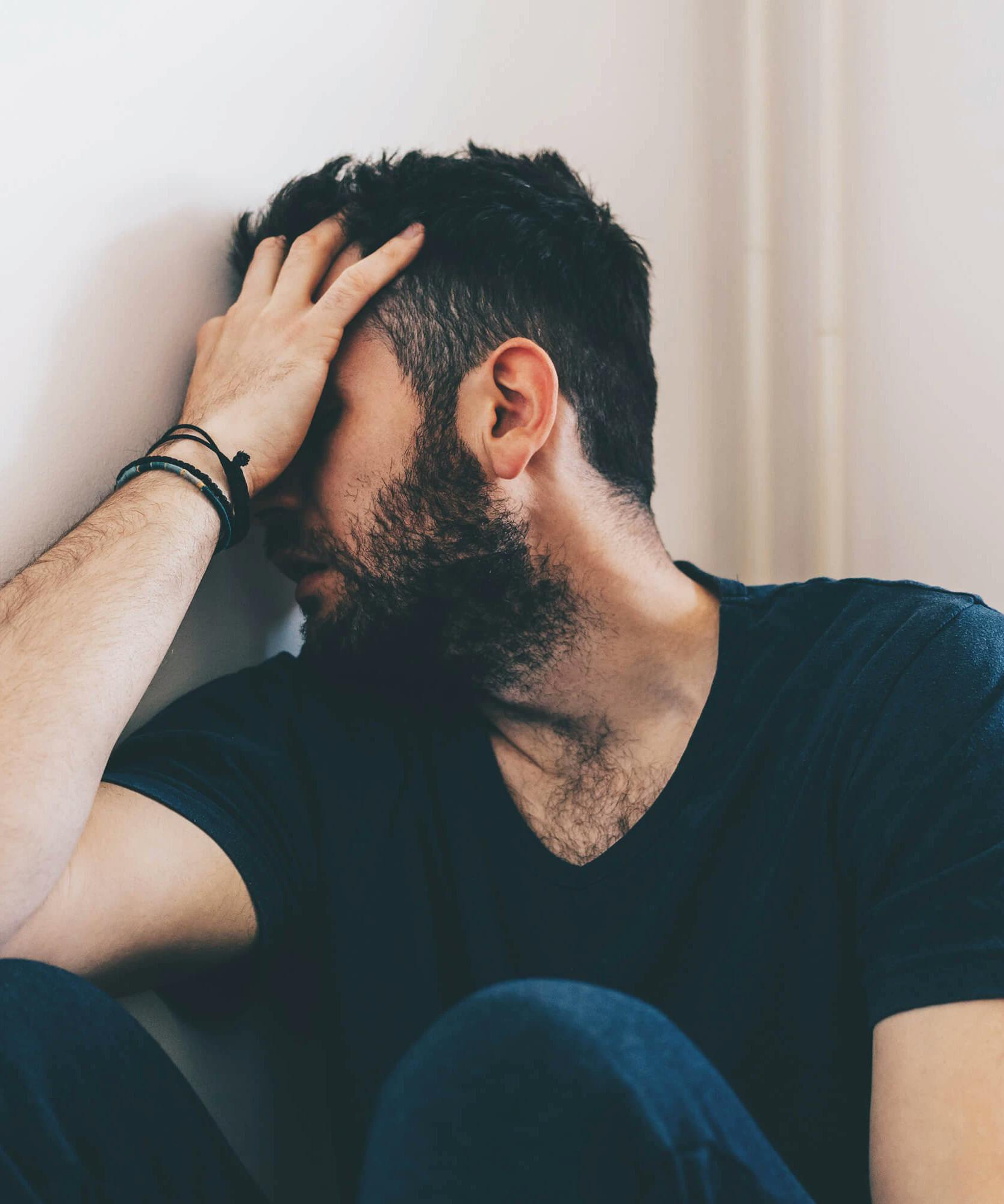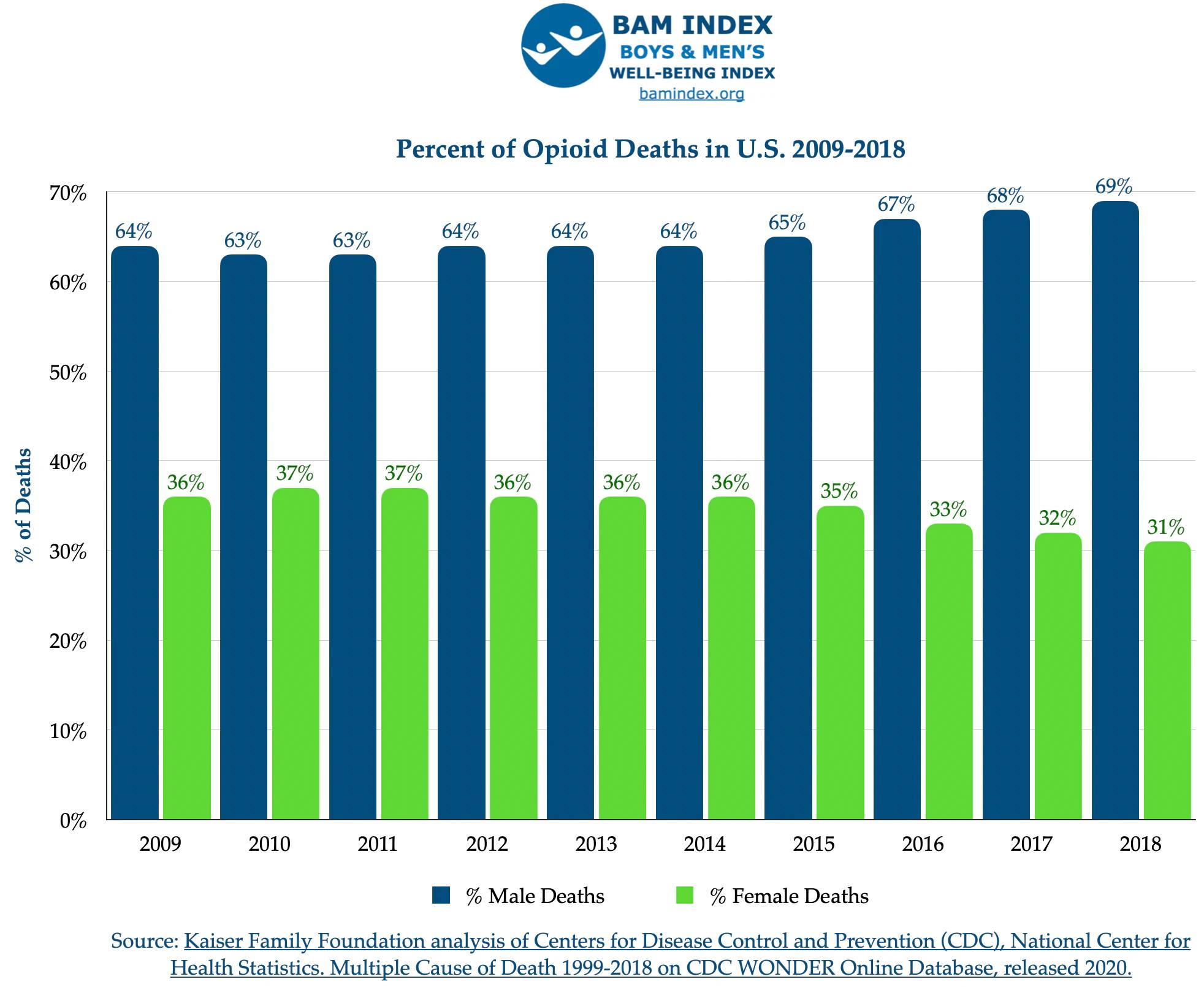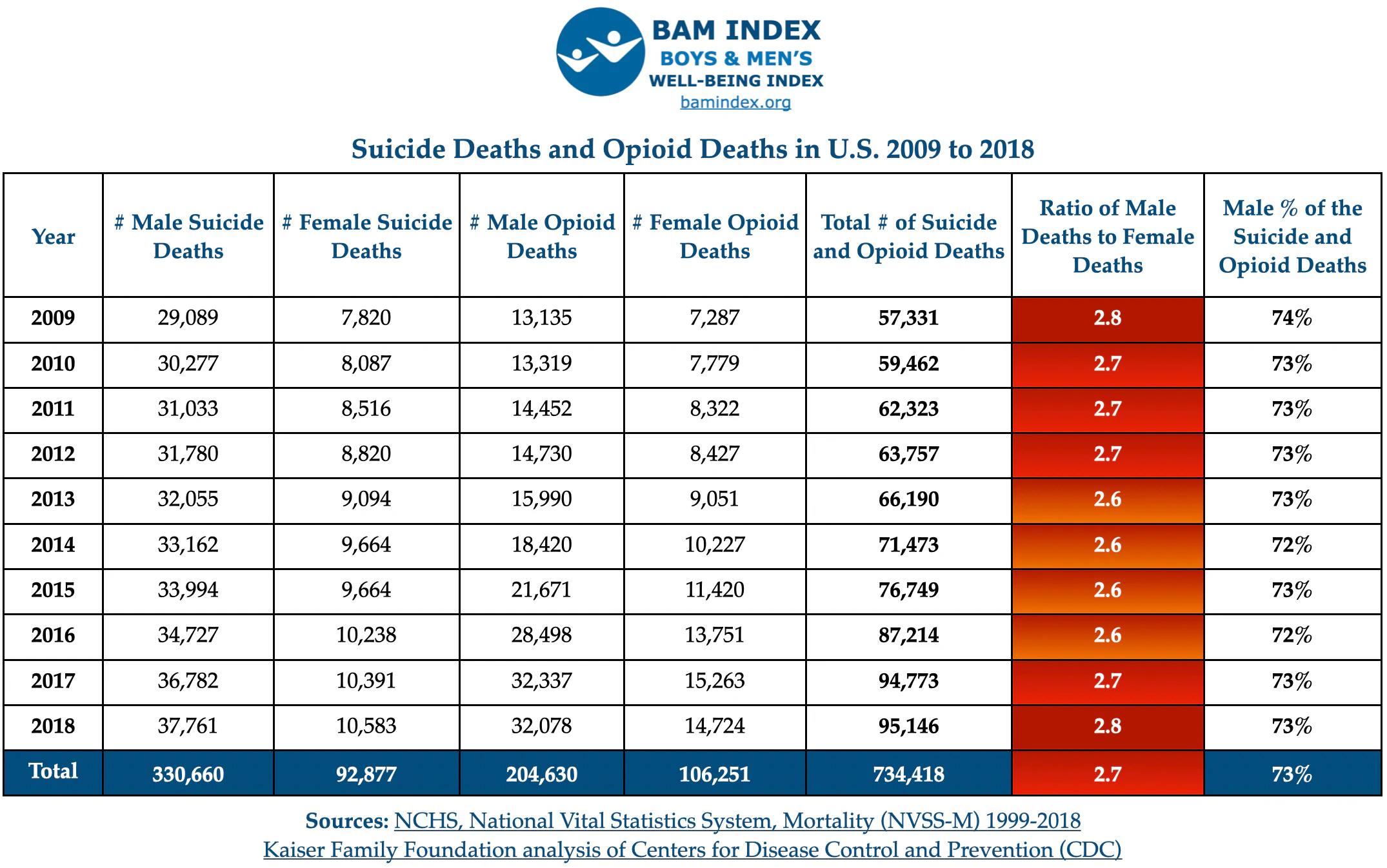The Opioid Crisis: Men Are More Than Twice As Likely To Die From Drug Overdose Than Women
While we’ve all been focusing on the Coronavirus pandemic – from the illness to the mask mandates to the dysfunctional education system to the protests – another crisis has been growing that isn’t getting the same amount of media attention: the opioid crisis.

The opioid crisis was bad enough before the pandemic, but since the world was flipped upside down in 2020, overdoses and overdose deaths have skyrocketed.
Men and the Opioid Crisis
The U.S. now averages about 275 drug-related deaths per day, mostly from synthetic opioids such as fentanyl. Nearly 92,000 Americans died of drug overdoses in 2020, which was a 30% increase from 2019. It was the highest annual total on record. Preliminary figures suggest 2021 numbers will be even higher.
But there is a concerning truth that is going underreported… Opioids are disproportionately killing our men. American men are more than twice as likely as women to die by overdose. Men 24 to 34 years old are the most likely among all age groups to die from drug-related causes. You could say that the drug-overdose crisis is a crisis of single men.

Married men are less likely to die by overdose. But single and divorced male drug-related deaths are increasing at a rapid rate. The latest CDC data shows that 35,419 single and divorced men between the ages of 25-54 years old died from drug-related causes in 2020, a 35% increase from 2019. Unattached men are more likely to die from drugs. Alone. This is heartbreaking!
Reports show that the recent surge in overdose deaths has hit black men the hardest. Black men have now overtaken American Indian or Alaska Native men and white men as the demographic group most likely to die from overdoses.

These numbers are scary. Opioids are killing our men, ladies! We need to do something about this! These men are our partners, our fathers, our brothers, our sons, our friends!
But what can we do?
What We Can Do To Help
I think the numbers are so extreme, we should consider categorizing the opioid crisis as a gendered issue. When issues negatively impact women more (and sometimes even when they don’t), society frames it as a gendered issue to bring more attention to it. If we frame the opioid crisis as a gendered issue, we may be able to gather more support and resources for our men. We could take a page from the feminist playbook.
If you’re a mom concerned about your sons, you can get involved in their schools and request more resources and programs to teach young men about the dangers and risks of drug use and encourage schools to bring in more strong, positive male role models for boys who lack an involved father at home. Moms should consider reading The Boy Crisis by Warren Farrell, which covers all of these topics.
We can also take a stand publicly to do more for our boys and men, like I do on Twitter. Let’s be real, ladies… We have the megaphone today. People will listen to women. If we use this privilege to serve others, we can really do a lot to help our boys and men!
We must also fight the anti-male propaganda being pushed on us all day, every day. We must create an environment where boys and men feel loved, supported, encouraged, and valued, and make them feel like they have a sense of purpose. Many young men I speak to say they feel like men don’t have a purpose in the world we live in today. Everyone needs a sense of purpose. A lack of purpose leads to behavior like drug use.
Many young men feel like men don’t have a purpose in the world we live in today.
Another idea is we can support organizations that help boys and men. There are many around the country. I support the Global Initiative for Boys & Men and Equality for Boys & Men. Both are doing amazing work to help bring attention to the struggles of boys and men and are very family and women-friendly (as most groups like these are once you see past the mainstream propaganda).
There are also many states considering bills to establish commissions for boys and men. These commissions would address the opioid crisis. For many years, Dr. Warren Farrell passionately fought to create a White House Council for Boys & Men to address the many issues negatively affecting boys and men (which also spreads to harming girls and women in many ways). The Biden Administration opted for a White House Gender Policy Council instead, which is pretty much just President Obama’s White House Council for Girls and Women but rebranded with a different name. The council completely ignores the issues affecting boys and men. Not a big surprise.
But movement is happening at the state level now, which is great news!
Take Washington state, for example, where three female legislators have sponsored a bill, HB 1917, which would create a Men’s Commission. A Men’s Commission would help figure out why the majority of drug overdoses and deaths are by males in that state, as it is in all states. In 2020, 838 men in Washington state died from opioid overdose, compared to 356 women (according to the Washington State Department of Health’s Injury and Violence Prevention Program). If Washington state becomes the first in the country to create such a commission, it would be a leader for the rest of our nation. Several states are currently working on putting forward bills like this. Washington could “break the glass ceiling,” if you will. Women’s support for these bills is indispensable if they are to succeed.
Closing Thoughts
Drugs are killing our men. It’s time for us to do something about it! Call your school boards. Call your local, state, and federal representatives. Share your support for boys and men on social media. Hug the boys and men in your life.
Readers make our world go round. Make your voice heard in the official Evie reader survey.